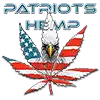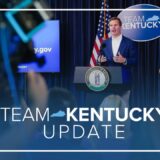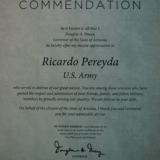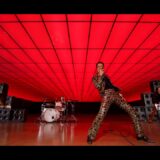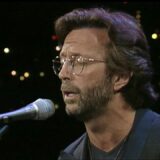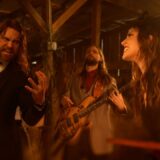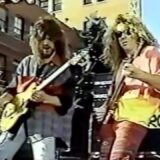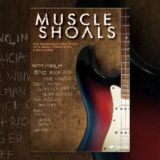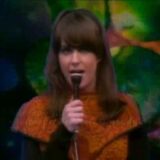[Music] [Music] There are colonies of hippies springing up in most American cities. They represent a new form of social rebellion. Turn on, tune in, and drop out. Acid was the medium through which the wavelength travels. There’s nothing grown up or sophisticated in taking an LSD trip at all. They’re just being complete fools. I couldn’t see anything except colors. And I thought, you know, this is supposed to be reality, but it wasn’t. It wasn’t anything. You can’t put a trip down there, Phil. I mean, colors do look pretty, but there’s so much more. [Music] LSD and psychedelics have been entrenched in the world of outlaws for the last 50 years. Since the mid60s, chemists and distributors have been risking their freedom to supply the underground market. But it wasn’t always like that. At one point, LSD was one of the most promising therapeutic drugs in the world. It all began with a bicycle ride in the spring of 1943. Bicycle day is one of the most significant dates in the in the druggy calendar. It’s just one day before 420, which is obviously, as we all know, it’s international weed day. So, bicycle day happens on April the 19th, and the first bicycle day was April 19th, 1943. And that’s the world’s first recorded LSD trip. Albert Hoffman synthesized LSD in his laboratory in Switzerland. And on April 19th, 1943, he decided to test out. He dropped a little bit into a into a solution. Uh he drank it and he cycled home or he tried to. That’s when the acid kicked in. There was no precedent for this in history. Like no one had taken acid ever. So he must have thought he was dying or something. And when he got home, in fact, he did think he was dying. He called a doctor and she checked him out and he was fine. It’s just like his his pupils were wide open, but other than that, he was fine. And a couple hours later, he fell asleep and woke up feeling like a new man. But that set the stage for the psychedelic revolution which would take place some years later. So ladies and gentlemen, please welcome Hamilton Morris. Hello everybody. On a Tuesday, it’s amazing this time of day. you have very understanding employers. So this day is a celebration of a number of things that I really value LSD but also self-experimentation in science. The discovery of LSD I think people talk about it as this is a a purely countercultural event but this really was something that was responsible for a huge revolution in psychopharmarmacology and neuroscience. I experienced another reality under LSD and before I had always thought there is only one reality a true reality and I realized there are other dimensions of reality. Obviously, Albert Hoffman is central to the history and trajectory of LSD for not only discovering it, but also appreciating it and advocating for it throughout his life at a time when it was dangerous. If you have open eyes, you may see the world in a different way. I mean, you see it as it really is wonderful. He could have just discovered it and said, “Oh, that was bad stuff. Everyone stay away from it.” But he didn’t do that. He appreciated. He was the first appreciator. Then you have a gradual increase in medical, psychiatric, scientific interest in LSD that continues throughout the 1950s. Sandos distributed LSD to psychiatric hospitals as an experimental drug called delicacy. In the early 1960s, it was possible to buy LSD from chemical companies. Back in the 1950s and60s before LSD became considered an illegal, dangerous narcotic, there’s a sort of understanding that psychedelics can be used as tools. It belongs in the hands of science which understands the promise on that farthest frontier, the human mind. When I started, the idea of LSD being a drug of abuse was not that’s not what it was. It was a therapeutic agent. It was a ceremonial drug. It wasn’t illegal because it didn’t produce addiction. And then there was a lot of physicians doing psychedelic assisted psychotherapy. Dr. John Beersburg was one of the first who conducted legitimate scientific research into how LSD could be used. He was integral to the opening of consciousness in the public realm. because he was a medical doctor, he was able to write in to Sandos Laboratories and get what has come to be known as the magic ra. This was the first gram of Sandos LSD to enter the country and it’s said that Dr. Beersford divided that gram and then got it into the hands of all the people who would become synonymous with LSD in the 1960s. After he bought the magic ram and he experienced LSD for himself, he became convinced that LSD had the potential to be a tool for humanity to understand who we are, how our minds work. He said in his own words, he said he found his vocation when he realized how powerful a tool LSD could be. Dr. Beersburg was among the first to develop working practices for psychotherapy using LSD, and he offered sessions to anyone he thought could benefit from it. Well, I think it’s time for you to have your lysurgic acid. We’ll be back after a while and see how you’re doing. Let us observe the effect some 3 hours later. Oh, it’s just like like you’re released or you’re free or I don’t know how I can tell you. What does this all mean to you? I’ve never seen such infinite beauty in my life. They found out that LSD and control therapeutic settings had less adverse effects than any other psychiatric drug that’s administered. It caused enough concern that the United States was prepared to buy the entire supply. the Iron Curtain countries were interested in LSD and its relatives as possible uh chemical warfare in the ‘ 50s and the early 60s. And because the United States government became aware of what was going on behind the Iron Curtain, they also cranked up some American manufacturing apart from Sandos. Uh there was great worry that the Soviets had developed uh rather esoteric and unusual methods of uh uh so-called brainwashing people. [Music] CIA. They tried to use it for their mind control program MK Ultra, which at one point involved hiring hookers to bring unsuspecting men back to apartments with two-way mirrors, plying them with acid, and then just knocking back and seeing what happened. [Music] There was also a parallel event here in San Francisco which I think is important to understand that the CIA was studying LSD as a anti-personnel agent. How this becomes relevant to this story is that Ken Keezy was a subject of a CIA funded Menlo Park LSD experiments. That’s when he first experienced it. Kim Keezy was a celebrated literary genius, the fame author of One Flew Over the Cuckoo’s Nest. It was like 1961 when I first heard of LSD and I heard of it through my friend Ken Keezy. He was uh part of an experiment that went on at the VA hospital in Menlo Park in which they would get paid to come in and take these various drugs that the government was trying out. And uh some were placeos, nothing, and some were something. But there was one that was really good. There it is. I I feel these lovely colors vibrating all over me. Oh, it’s lovely. [Music] One of the theories is out of that came and the Merrick pranksters and psychedelic revolution. You can hear the celestial laughter. When when you realize it was the CIA that really turned on America. Kezy assembled an entourage of first generation acid heads known as the Mary pranksters. The Merry Band of Pranksters, our group, we were an actual band. We played instruments and stuff and Keezy got this bus and we outfitted it with a recorder and a movie camera and we were going to take the bus to New York City and back and film and tape the whole thing and be like a movie had never been made before because we’d be all high on LSD and we’d pull into a place like even a gas station and the painted bus would just attract kids like crazy. Seeing the bus altered my perceptions of reality because it always seemed to me like our existence on earth was being funneled into this middle class restricted area. You know, we were only allowed to behave in certain ways. I wanted to be free of that. And as I got to know the the rest of the of the crew, all these discussions were going on about about music and literature and pathways to freedom. And I knew I had found my people. We came back from New York and Ken Keezy had a job then in the ward of the VA hospital and he realized this door was to the office of the guy that had been running the experiments. and he opened the drawer in the desk and looked in. His eyes bugged out and he reached in and pulled out a bottle of Sandos LSD 500 tabs, stuck it in his pocket and took it home. [Music] With their new supply of LSD, the pranksters began dosing the public through a series of self-produced psychedelic freak shows. We called it the acid test. And so we charged a dollar at the door. We had little cards printed up. Can you pass the acid test? Ken Keezy and his friend Ken Bes pretty much ran the shows. And so we would have a large tank of Kool-Aid and put in a certain amount of doses and invited people to partake, you know, and it just grew bit by bit. The acid test became really a rolling road show. [Music] The pranksters were like a social art project. You know, they were out there trying to blow people’s minds and they were socially trying to thumb their nose at things that had been um sacred to the mass society. You know, that’s the prankster way, you know, is to be on your toes and be ready to to grab the ball out of the air and and send it in a new direction and have fun. We were very much an in-your-face group. So, we were practicing uh radical change, I think. So, a lot of what the pranksters were doing was was to encourage the making of news and to really show up Commencement exercises for LSDU will be held at Winterland on Monday night. Will LSD be in evidence at the graduation ceremony? Um why don’t you guys come? Yeah. Society didn’t know anything about it at that time. It took a while uh before LSD became manufactured in uh California and started spreading through San Francisco. But in those early days uh I don’t know of any others besides us that were taking it and the experience became more meaningful as we went along. We started to absorb more people and we get pulled over, you know, invariably get pulled over and looked over and cops would be just scratching their heads. They didn’t know what to do with us. They couldn’t handle, you know, 12 people, 14 people. They wouldn’t fit in a squad car. So, uh, they had to like, you know, sternly warn us about our behavior and send us on our way. [Music] these things grew and during the growth the band which was at the time called the warlocks uh one time after one of the acid tests they all got together and opened up a dictionary and Jerry put his finger on it and it said the grateful dead the chariot the chariot of the sun is pulled across the sky by the grateful dead oh they love that so they became the grateful dead [Music] when the band began to play and Jerry in particular began to play the the whole place just would change. You could feel when everybody’s feel electronic field would resonate with everybody else’s go along and everybody feels dark back and forth. Did you feel it? Yeah. I became what they call a dance freak. I would go to the straight every night man, you know, in the music. Remember this was the citadel. It was the beginning of lots and lots of rock groups. So I became a dance freak. You remember those people that they’re right in front of the stage and they’re doing, you know, like acid kind of gestures. I had an inventory of symbolic gestures. the lifestyle that you were experimenting with was being made legitimate by a group like the Grateful Dead, the the San Francisco rock and roll movement. All of a sudden, they’re singing about your quest, your dance, your trip, and you’re wanting to share the trip. [Music] No other band that we ever hired could could handle any of the goings on. You know, they really held their [ __ ] together and they made incredible progress, I think, as a band at the acid test. This is when you could really feel the energy of the psychedelic movement and suddenly we’re reaching out and creating small communities all over the place. And California really changed during that period. [Music] In San Francisco in the 60s, they Ashberry was vibrant with great elaborate chalk mandalas in the panhandle ladies and with her long hair and long skirts and puli oil. A great sense of freedom. It’s as though our whole generation simultaneously globally was waking up together to some unimaginable future of no fighting, no wars, no military, an evolutionary moment in the history of man. And we were all part of it. [Music] What’s happening is a basic change in the evolutionary process of mankind. The hippie movement including the LSD stood for peace. It stood for beauty. It stood for a turn towards spirituality. It was, you know, a purge of any kind of disruption in your mental environment. A lot of people say to me, “What are you doing? You’re not doing any work.” We’re doing the hardest work in the world because we’re growing. We’re trying to change. the elders of the the time in the conservative American establishment uh just saw kind of unusual young people with long hair and dressed strangely and uh you know perhaps not reporting to jobs at 9 in the morning or or dropping out if you will um and that was caused great concern. I think the main issue was um the anti-war fervor. We didn’t know what the peace movement was till we took the LSD and then we finally saw what the peace movement could have been. But we had no idea of that kind of thing in the brutal uh place that we had been raised. And things totally changed once you opened your eyes. [Music] We didn’t really feel like we were part of the political change, but it did shift. And um you know, doing a little jail time also helps you to remain in reality. I’m tired of it all. Are you glad it happened? I’m not glad it happened, but I’m not sorry about it particularly. I mean, I’m not uh I’m not weeping with remorse. Ken had gotten arrested and so had I gotten arrested a few more times, but Ken, they wanted him. They wanted to get Keezy. And this was so obvious that they were setting up like practically roadblocks to get Ken. Keezy had several priors that he was trying to fight legally, but it was killing him financially to to fight these things. And so he I believe at that point had made up his mind to flee to Mexico. And uh he did. So what he did was he had his cousin Dale, who looked just like him, take these uh sneakers down to the beach there in the ocean and with a note in them and leave him there and and hide off. And they found it the next day and it was a note in there from Ken Keezy. I can no longer abide this world in which I’m going to be uh bound by uh four walls and my spirit can’t soar. So I’m going where my spirit will be everywhere. So the headlines in the paper, Ken Keezy commits suicide. And what happened was he had joined up with our artist friend uh Ron Boise and they’d split from Mexico. So he he went down to Mexico with um a couple of a couple of the prankster friends who gave him a ride and he wound up in um Mazatlan and uh after a series of of other small events, the bus followed and I went with we’ve eventually rented a house on the beach down in southwestern Mexico and uh took a break from feeling pursued and and took a break from a lot of people too. 6 months we were there hiding out until our visas were up and then we sort of split up and went home. Um it was kind of the end of the trip in a way. So we didn’t really recongregate for quite a while. Yeah, we were living in fool’s paradise, but it worked out and it was all okay. I think we preserved our sanity and our our courage and our ability to reason perfectly well. The psychedelics didn’t really hurt us that badly, if if at all, but we were always being told that they were. We were told we were going to be losing our minds. It would be we’ll be screaming in the streets. That didn’t happen at all. I think we’re sensitive. alert, caring people. And I and I that goes for everybody that was part of the old prankster brigade. As the pranksters were rolling around the country in chaotic fashion, Timothy Liry was doing his own thing on the east coast. A more disciplined academic approach. Dr. Timothy Liry, a psychologist who had been fired from Harvard University, was undoubtedly the most internationally conspicuous prophet of the psychedelic revolution. His theme was turn on, tune in, and drop out. This what he would preach to people. And all these students were listening to him. They were taking acid. They were dropping out of college. They would be pissing off their parents. Okay. Tell young people today, drop out of school because schools, education today is the worst narcotic drug of all. He certainly was a disruptor of the status quo. People would listen to him because he was so convincing and he was good humored. So, he became a chief advocate for the uh widespread use of LSD. [Music] People seem to think that we invented LSD. We didn’t. You know, God made LSD. The divine process, the evolutionary u uh sequence over billions of years has produced uh the plants and the vegetables and the molecules which uh we now call psychedelic. [Music] Lori always said you got to take a,000 mics. If you want a trip, you need a thousand mics, microgram we’re talking. And uh 25 just isn’t adequate. So we who followed him, we started dropping, you know, LSD uh at a much greater uh percentage and the trips were more profound and the hallucinations, you know, were more vivid. Dr. Liry, what are you up to here? We’re teaching people how to use their head. The uh point is that in order to use your head, you have to go out of your mind. First time we ever met uh Timothy Liry, we were up in Milbrook, which was a interesting experience for us because we were much more west coast than East Coast. And the west coast people who were into psychedelics were were more of a community and more involved in music. And the people on the east coast were more intellectual and proprietary about psychedelics. And it was a a very different scene and we did not mix. Well, what I would think of as the East Coast School took toward these substances and how they should be used. And a lot of that came from Tim and from Ramdas and Ralph Mner. the idea that this was a kind of solemn experience, that it was that it had the potential for significant spiritual development, that it should be um engaged in in a a pretty contained environment, that there were practices of associated with the use of psychedelics that should be observed, but they also took the the experience in a kind of ritualized context that was that was very predominant on the east coast and of the people around Tim and Ramdas. He basically talked about the importance of set and setting. Matter of fact, both Ramdas and Liry hope that they’d be remembered for their philosophy that where you take it and who you take it with is the most important aspect of of what your experience is. Then there was the West Coast School which was the like let’s see how weird we can make this and let’s turn up the weirdness monitor and if we can make it even weirder let’s see if you can cope with that. You know the idea would be to be prepared for whatever life dished out. People took acid in a group. They took acid at a party. They took acid in a multiensorial bombardment environment. One thing I can remember from the long Sherman’s hall was a woman lying on top of a like an old Chevrolet, naked woman lying on top of an old Chevrolet and pulled up next to the Chevrolet there was a pickup truck full of cooked spaghetti and somebody was pitchforkworking pitchforked fulls of cooked spaghetti onto this woman’s body you know and for no particular reason but like high on the weirdness meter you know and um I think those two schools um coexisted in certain ways um disagreed with one another in certain ways and merged in certain ways and um the outcome that we have now is sort of a an amalgam of those two points of view. I think we tried to converge but but the Liry Alpert contingent really didn’t want anything to do with us cuz we were too wild. So it didn’t really work out that way. What makes it complicated is that there is no ideal set and setting for everyone. It’s sort of like music. You know, what music sounds like is the whole thing. It has an enormous effect, but you can’t point to one type of music and say that’s the type of music that is best because it varies based on personal preferences. So, I would never want to use LSD in an uncontrolled environment in public at a festival, for example. Many people think that’s the only way to use LSD. That’s the whole point of LSD is to use it at a festival. That’s the only time they would use LSD at a festival. I would never dream of that. So, there’s no right or wrong way to do it, but the user of course should be aware that how they do it will have a major effect. And I think again because of the fact that these are black market commodities where people don’t have control over dosage and often don’t even have an appreciation of the profoundity of the experience to begin with. They often just take it like a friend has it and they just take it and they think, “All right, why not? I’m taking it because someone gave it to me.” And I think that’s probably not a good idea. Somehow or another, it started leaking out and kids started taking it and having bad trips, but that was a very small percentage. But the adverse effects were demonized. But because it is such an extremely dangerous drug, a drug whose effects are so unpredictable, a drug which so often causes severe longlasting damage, it was a fiction that was uh created ultimately by law enforcement to disenfranchise the ideology of the hippies. They were just [ __ ] crazy acid heads and they promulgated false things. We know that someone who takes LSD has brain damage. We know that this drug damages the brain. Because of that, legitimate research stopped and it all went underground. [Music] People often talk about, you know, the 60s ending with the Manson murders or something like that, but really there had been uh a gradual undoing of a lot of the things that would have made LSD something that could have easily been integrated into our society had begun well before 1969. The patent for LSD had run out in 1963. In 1965, Sandos announced that they weren’t going to manufacture LSD at all anymore, that they were done with it. So, that’s the end of a sort of capitalist pharmaceutical support system for LSD and really all other psychedelics. By 1965, it’s already not looking good for this being integrated into our system. And then on top of that, you have clandestine chemists that are synthesizing it because they recognize its value and they want to make it available to as many people as possible. After taking LSD for the first time, my life was totally changed. It was like getting struck by lightning. Um, I wanted to share that experience with everybody. Even back in 1965, which is when I first took LSD, we were very concerned about the environment, about overpopulation, about inequality of all sorts. And I was pretty convinced at the time that if enough people took LSD that a lot of the bad things that were happening would change. And I said, you know, we should make this and we could give a lot of it away and we could change the world. And so that’s what I set out to do. The LSD chemist who kept the supply chain intact after the substance was made illegal face constant danger and the threat of arrest to keep the LSD trade alive. [Music] I spent a good part of 1965 searching to try to find the essential raw material to make LSD and it turned out to be really hard to get. But I kept hearing that had a lot of it and I knew that the acid that I’d first taken had been made by him and it was really good. Uh, I thought this is the guy I need to get to know and I want to become his apprentice. Alsley Bear Stanley, sound engineer for the Grateful Dead, almost single-handedly fueled the Bay Area’s trip through the mid60s. [Music] Alsley had the reputation, they used to call it acid, and out of Southern California, it was the best asset you could buy. [Music] Not only was Alley an infamous LSD chemist, he was also the Grateful Dead sound guy. He’s the one who first started recording the band live and created the famous wall of sound that the Grateful Dead became known for. He was always uh pretty headstrong um smart and and self motivated. Um didn’t like being told what to do. uh didn’t like to um to to follow the institutions. Uh you know, he started uh college and uh and dropped out because he felt like they were trying to make him do busy work. You know, he didn’t want to to sit in the lab and do experiments that they had already done. We know what’s going to happen if I mix all this stuff together. I I don’t want to waste my time. He started making acid because he wanted to take it um and it was hard to get real acid. So he said, “Well, how hard can it be to make?” So he went to the library and spent 3 weeks reading the published papers on how to make acid and went out and got the equipment and set up a lab. And as it turned out, it’s hard to make a small amount of acid. A little bit goes a long way. Making LSD is difficult and figured out how to do it on his own. He literally poured over chemistry texts and he was the kind of person who if he couldn’t do something himself, he would find somebody to help him do it. And I had talked about electronics a lot. He knew that I was doing sophisticated electronics design work. He also knew I was, you know, very much into LSD. I ended up agreeing to go on the road with the Grateful Dead to do electronics design work and that was the price I had to pay to eventually get to be his apprentice. A few months of traveling with the band and getting high all the time uh convinced Bear that he could trust me. So when he ran low on acid and money and decided to set up another lab, I got to work as his apprentice there. The thing about making it um that that my dad said was that um you know it was impossible to to to tab it up and not you know you absorb it through your skin. Um so he said at a certain point things got so gnarly that you couldn’t see straight to keep doing so you had to do shifts and after a few days you know you went back to normal and then you he said you could drink it like water and it wouldn’t do anything to you. what Bear was promoting this idea of LSD being a sacrament that could help us transform consciousness and transform our culture and I bought that and therefore when he said let’s do these things I said okay and I could learn quickly and I actually went to UC Berkeley and I took a course in organic chemistry So I could learn these various ways you have of making a product using chemistry. And when he felt I had learned enough, he said, “Drop out and let’s get started.” [Music] He was very careful about all the conditions that were required in his mind for making the purest LSD. We couldn’t wear street clothes. We had to be completely in clean wear, it’s called, where you’re gloved up and you have scrubs all over your body. We had to put booties on our feet. Everything had to be completely clean. All the lights in the lab had to be bug lights because LSD decomposes in natural light. That it had to be pure. And he believed that anything that wasn’t pure had contaminants and the contaminants were a factor in having a bad trip. And if you had a pure product and a proper set and setting, then you would have that transformative experience that we call the psychedelic experience that gives you connection to the divine. Bear considered himself an alchemist and he was very into transformation of our culture. And he believed that the more people got on the bandwagon, the more impact we could have. And he believed that a community that could form who had the same values believed in psychedelics listened to the music that we loved could help transform our culture. LSD began to become a little more in the mainstream of the hate ashbury life. We had people from San Francisco, Marin County, Berkeley, and Big Su all converge for three days of mild, wild, beautiful insanity. And we thought maybe we’ll have a few thousand people there. Who knows? Well, it turned out there were 50,000 people that filled that field. Even though the media says there were 20,000 people in it, that place was packed. The human being that happened in January 1967, that’s where we distributed white lightning. That was the acid we made at Point Richmond and Bear gave thousands of those away in Golden Gate Park at the human being. And it was amazing to see how many of us there were, how many people had the same gleam in their eye, the same smile on their face. And in the middle of the day, a biplane flew over the crowd and someone parachuted down. First threw out roses and then parachuted down and that was Stanley. And then he be proceeded to hand out some of his finest acid to the crown. That was an urban legend. I I don’t think he he never You don’t know. You don’t know how many people have told me about that. It was just a story. I mean, no, he did he I don’t think he ever made a parachute drum. There are there are many apocryphal tales about about Bear. the more the more confusion there was around what he was doing and who he was um the better, you know, because you know the people who get the most confused are the are the cops. So it was okay for him to have that that mythos um you know around him and he didn’t he didn’t waste a lot of time trying to convince people. He was very cautious because he felt like he was doing alchemical work, sacramental work, and he didn’t want to be caught. He wanted to get this done. He knew they were on his tail. They he knew that eventually he would be caught, but he wasn’t going to stop. And he trained other chemists to take over when he would no longer be able to do it. While single grams might be distributed at Grateful Dead concerts, the uh bulk material, say 100 g, that’s a million doses or a kilogram, that’s 10 million doses, those are very rarely seen those kind of quantities, but they do exist and uh can only be and have always only been um distributed in San Francisco safely and trustingly in a type of true brotherhood where one’s lives are bet on it each second of the day. [Music] When I first became Bear’s apprentice, he’d been distributing through a black fellow, very sweet black guy named Lavell Benford. But they Lavell and Ver had agreed that they would end that relationship as soon as either of them felt uncomfortable like the heat might be developing. That happened and Ver instead started distributing through the Hell’s Angels. A lot of the Hell’s Angels were more into alcohol and violence, but not the San Francisco, Oakland, and Richmond Hell’s Angels. They were into psychedelics and they used to come to Grateful Dead shows and they’d line their bikes in formation. They’d all fire up and rev up the bikes and they take off with this amazing sound. It was music. It was just incredible. Key loved the Hills Angels. The Grateful Dead loved the Hills Angels. Bear loved the Hell’s Angels. I thought they were a gang of thugs and didn’t want anything to do with them really. Um, so I made Nick promise that the acid we made in Windsor would get distributed through the Brotherhood of Eternal Love. The Brotherhood of Eternal Love took LSD distribution to the next level by hooking up with Tim Scully and Orange Sunshine. We got together weekly as a group. Everybody had put in their money. Everybody’s a working bloke, you know, and however much money we had is what we could go score. And so it meant that, you know, everybody got high. Yeah. And uh I mean it started off like that, you know, and then it finally graduated into, you know, getting to play ball with the big boys. We’ve been running weed from Mexico and filling U-Haul trucks with with weed and furniture and [ __ ] and driving it back to New York for a long time already. We had connections to sell weed, which is really connected to the same people want to buy acid as we’re buying marijuana. And we already had a big distribution for that. And what the acid just fell right into that and we became the biggest acid dealers there was. [Music] When Timothy Liry’s East Coast contention hooked up with the Brotherhood, they got an endless supply of LSD. Brotherhood of Eternal Love. They were um selling LSD and promoting it all over the states. It was a group in Lagona. At the time they began their little clan. Long hair was the way that they could identify each other as being part of their culture. And the cops had not been hit to that. Couldn’t think of going with long hair to be able to, you know, investigate or get into the scene. And so they had a very special time and a very special moment. [Music] And then very suddenly, probably due the the effects of um the Brotherhood’s efforts in San Francisco, you had the first uh million hit or 10 million hit uh distributions of uh White Lightning and Orange Sunshine by uh Tim Skully and Nick Sand and um and so you had large populations suddenly exposed to an advanced near chemical almost simultaneous ously and almost entirely under 25 years of age. We were so young and we’re such among the first that there were no elders to talk to about any of these experiences. There was no one over over 30 to talk to. U the elders didn’t take anything. So we were simply among ourselves talking about extraordinary subjective phenomena. um opening of the heart, opening of the mind. Um students sitting and watching um a sunrise in Carmel, California, causing great concern among the police about why are these young people watching a sunset? Why are people being anti-war? [Music] The social phenomena were were spectacular. It was a sense of freedom that uh was unanticipated and unheraldled. uh such freedom it became a political threat for the survival of the people of Vietnam and for the survival of the moral integrity and the lives of the people of the United States of $430 billion a year into a swamp from which there can be no fire. Meanwhile, Nixon was the president of the United States and he was screaming that Larry was the most dangerous man in America. Let the kids get high. As a matter of fact, President Nixon, why don’t we all turn on together? Larry had such a poor reputation amongst the establishment, they were really pissed off at him. Okay. In about 1960, early 60s, Liry was with his family traveling to Mexico. And as they were about to cross the border, he was detained and his daughter had some weed on her. And Larry took the responsibility for it and he got a 30-year sentence in federal court for for transportation of marijuana across the border. And of course, probably the reason he got such a high sentence is that the federal laws were very tough and they were not happy with this guy at all. Okay, he was uh very offending to them regarding his promotion of LSD. There he was in prison and uh a group called the weathermen agreed to help him escape. He was able to climb on the wire and dropped down to the ground. He’s picked up by the weatherman. They took his clothing and uh to the south and dumped it into a gas station towards LA, make the cops think he went south when he actually went north. And they gave him a phony passport. Timothy Liry, formerly of Harvard, now known as the high priest of the drug cult, escaped during the night from the California men’s colony at San Louis Abyspo. Apparently, he simply walked out of the minimum security prison. So he went to Switzerland and there he was welcomed for a while but after some time the feds was after him. They wanted him out. They wanted to pick him up. Switzerland would not would not extradite him but they didn’t want him there either. It was a beautiful villa where they were in beautiful part of Switzerland. But it seemed that because he wasn’t supposed to leave, it became like a prison for him in a way. So he started venturing out first to Austria and then finally he went to Afghanistan where he was spotted by the DEA and captured and brought back to the United States. Something very ominous about this tendency to call anybody that you don’t agree with insane. Now, maybe it is insane to be against what’s happening in this United States today. Maybe it’s insane to try to have hope that something can be done about it. So, if that’s insane, uh, count me in. But, uh, otherwise, uh, make up your own mind. There was a strong parallel between how Liry was hunted down and how and how Ken managed to attract attract the police seemingly as much as possible. But uh he both of them suffered terrific uh losses both both in their their money, you know, their livelihood um their their social standing changed. There was a time when it seemed that he was afraid, perhaps uh he was right, but he was afraid that they would keep him in prison forever. So he agreed to uh to inform on people. That’s how the war on drugs began. It became a war on freedom. became a war on science because we lost more than 50 years. Yeah. In which psychedelics like LSD could have been used both therapeutically and for the spiritual advancement of people. The government was afraid that uh when people took LSD, it would uh open their minds. Uh they would be open-minded about most things. They would look at everything critically in a way that they had not before. And that was felt to be a great danger. still a question as to why is it such a government concern? Why is it illegal to expand my mind? Why why should somebody else care unless I’m committing antisocial acts? Well, I understand that, you know, becoming a distributor of what I considered the sacrament made me a criminal. What started with promise ended in tragedy as all the outlaw chemists and dealers started getting locked up and targeted by the US government for their role in the LSD trade. America’s public enemy number one in the United States is drug abuse. In order to fight and defeat this enemy, it is necessary to wage a new all-out offensive. I have asked the Congress to provide the legislative authority and the funds to fuel this kind of an offensive. They prevailed. Martyrs were created. LSD was prosecuted vigorously and their prosecution persisted. If it takes another 50 years of of fighting these knuckleheads over the right to consciousness, uh, bring it on. Only the gnarly show up when it’s this gnarly. And that’s why this war is never ending and uh costing us so so dearly it can’t even be measured anymore. It’s not a problem for the underground. It’s something they can bear um as long as the society needs. Well, Nixon was right. We were the most dangerous thing in America. And uh the thing is is that we’re not stopping. [Music] Hey, [Music] hey, hey. [Music]
Video Tags: Documentary film,Documentary,psycedelics
Video Duration: 00:55:22

